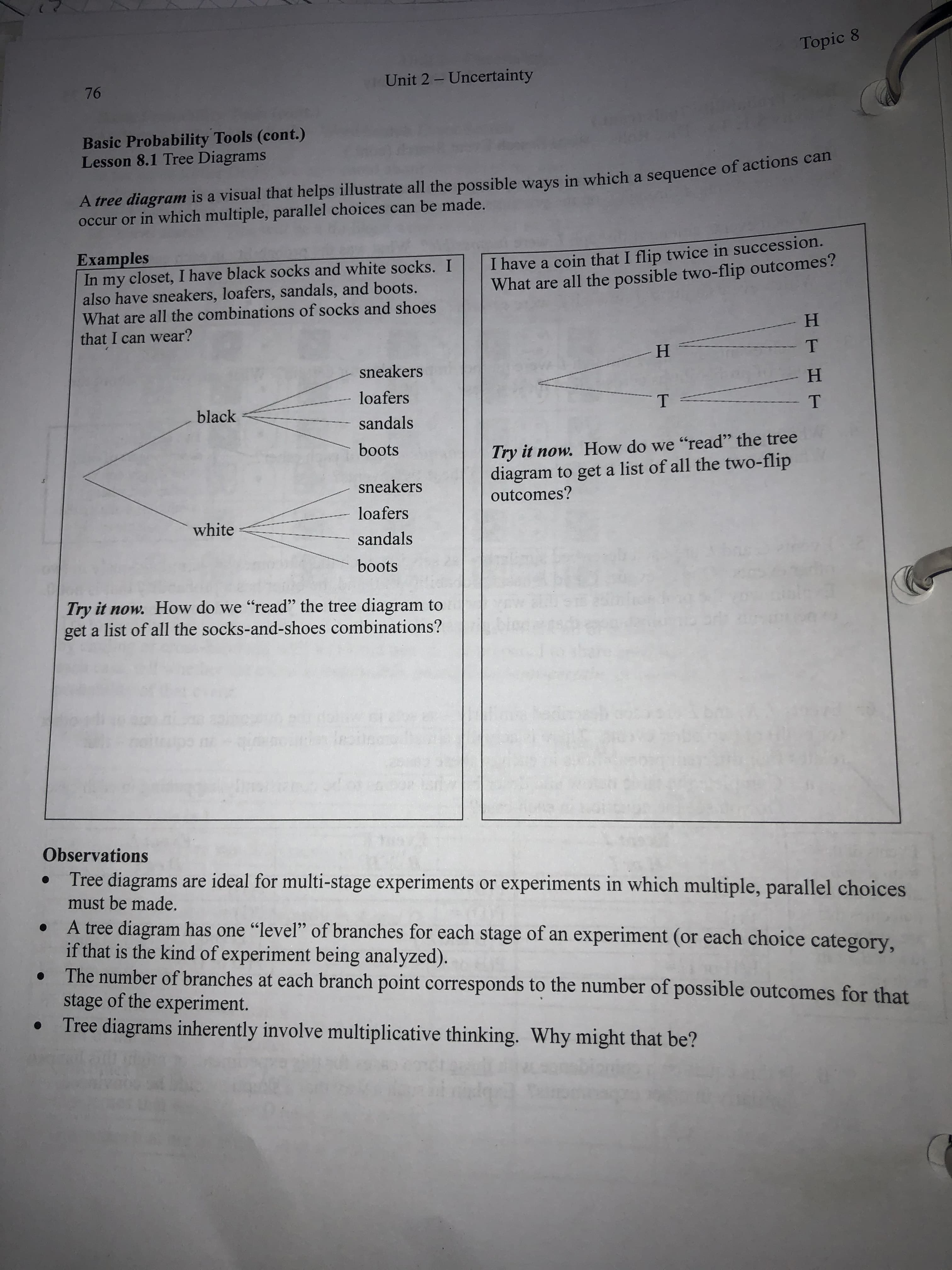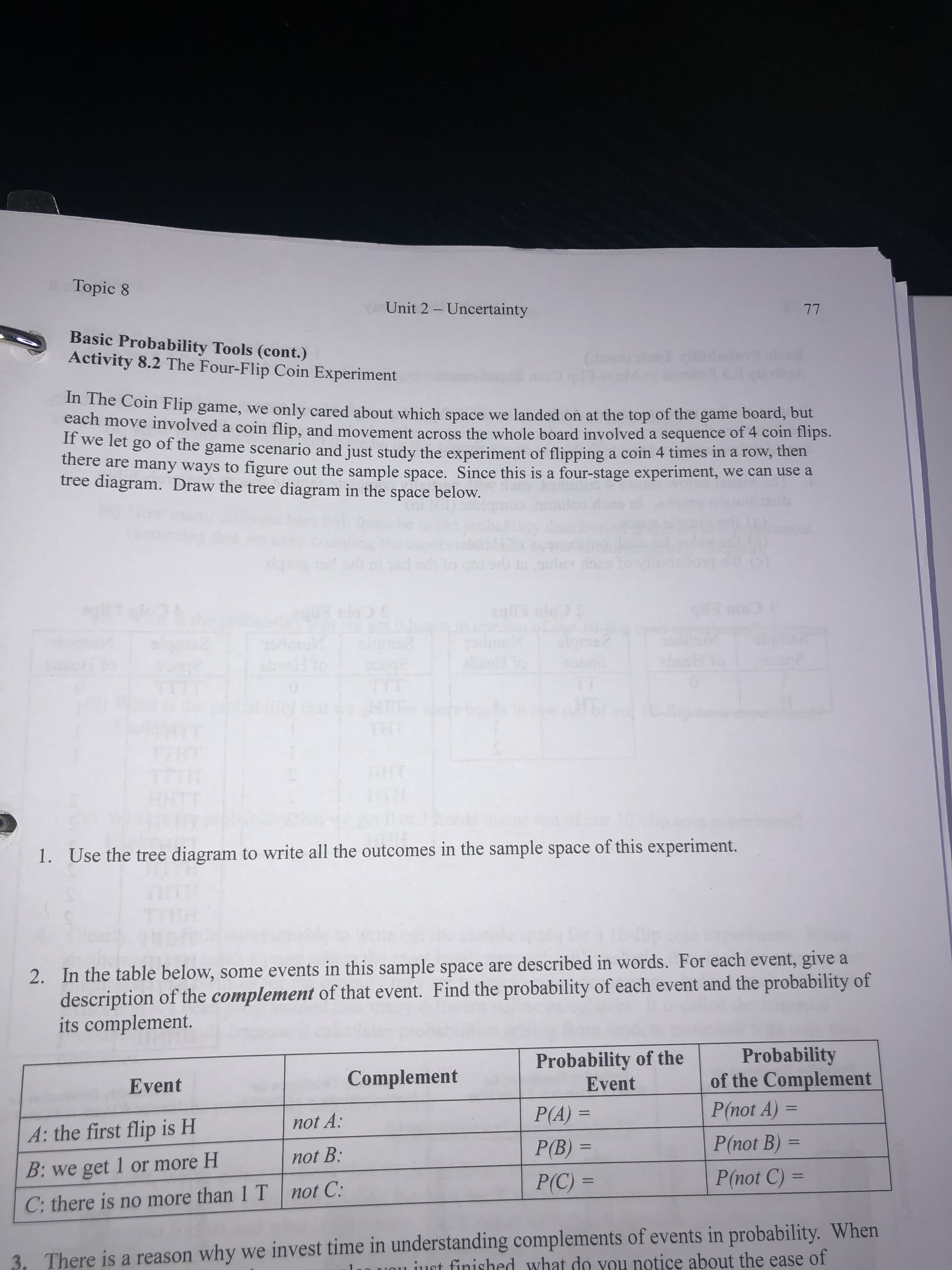Topic Unit 2 - Uncertainty 76 Basic Probability Tools (cont.) Lesson 8.1 Tree Diagrams A tree diagram is a visual that helps illustrate all the possible ways in which a sequence of actions can occur or in which multiple, parallel choices can be made. I have a coin that I flip twice in succession. What are all the possible two-flip outcomes? Еxamples In my closet, I have black socks and white socks. I also have sneakers, loafers, sandals, and boots. What are all the combinations of socks and shoes Н that I can wear? - T Н sneakers - H loafers T - T black sandals Try it now. How do we "read" the tree diagram to geta list of all the two-flip outcomes? boots sneakers loafers white sandals boots Try it now. How do we "read" the tree diagram to get a list of all the socks-and-shoes combinations? e Observations Tree diagrams are ideal for multi-stage experiments or experiments in which multiple, parallel choices must be made. A tree diagram has one "level" of branches for each stage of an if that is the kind of experiment being analyzed). The number of branches at each branch point corresponds to the number of possible outcomes for that stage of the experiment. Tree diagrams inherently involve multiplicative thinking. Why might that be? experiment (or each choice category, Topic 8 Unit 2 - Uncertainty 77 Basic Probability Tools (cont.) Activity 8.2 The Four-Flip Coin Experiment In The Coin Flip game, we only cared about which space we landed on at the top of the game board, but each move involved a coin flip, and movement across the whole board involved a sequence of 4 coin flips. If we let go of the game scenario and just study the experiment of flipping a coin 4 times in a row, then there are many ways to figure out the sample space. Since this is a four-stage experiment, we can use a tree diagram. Draw the tree diagram in the space below. do nd io0 & elms ps THR HT TH Use the tree diagram to write all the outcomes in the sample space of this experiment. 1. 2. In the table below, some events in this sample space are described in words. For each event, give description of the complement of that event. Find the probability of each event and the probability of its complement. a Probability of the Complement P(not A) P(not B) Probability of the Event Complement Event P(А) %3D Р B) %— 11 1 not A: A: the first flip is H not B B: we get 1 or more H P(not C) = P(C) = no more than 1 T not C C: there is 3. There is a reason why we invest time in understanding complements of events in probability. When iust finished what do you notice about the ease of
Permutations and Combinations
If there are 5 dishes, they can be relished in any order at a time. In permutation, it should be in a particular order. In combination, the order does not matter. Take 3 letters a, b, and c. The possible ways of pairing any two letters are ab, bc, ac, ba, cb and ca. It is in a particular order. So, this can be called the permutation of a, b, and c. But if the order does not matter then ab is the same as ba. Similarly, bc is the same as cb and ac is the same as ca. Here the list has ab, bc, and ac alone. This can be called the combination of a, b, and c.
Counting Theory
The fundamental counting principle is a rule that is used to count the total number of possible outcomes in a given situation.
Refer to the first picture for assistant for question 1 and 2 on the second picture. Thanks in advance!!!


Trending now
This is a popular solution!
Step by step
Solved in 4 steps with 3 images








